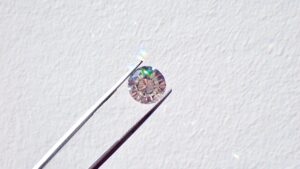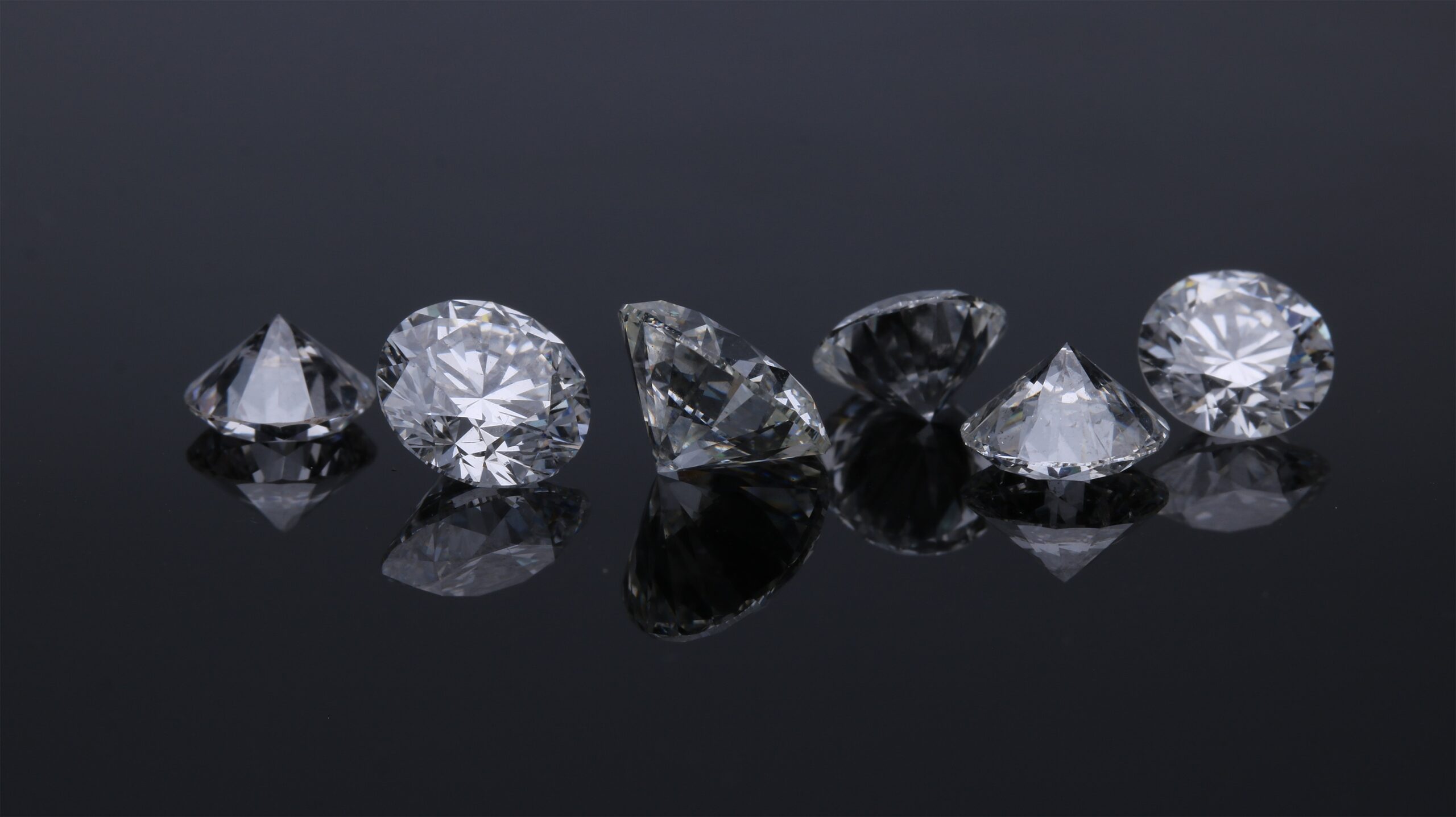If you find yourself on the journey to purchase an engagement ring, the 4 C’s of diamonds are likely terms you’ve encountered. But what exactly do these letters represent, and more importantly, how do they impact your diamond selection? In this enlightening article, we will dissect each of the 4 C’s of diamonds and shed light on their significance. By the end, you’ll be well-versed in the world of diamonds, whether you’re just starting or seeking to deepen your knowledge about these precious gems. Here’s your guide to the 4 C’s of diamonds.
The Four Key Factors of Diamonds
The 4 C’s of diamonds stand for Carat, Cut, Clarity, and Color. These four attributes are the cornerstones of a diamond’s valuation. Each of these aspects is meticulously scrutinized and graded on a standardized scale to ascertain a diamond’s quality and worth.
The 4 C’s interplay within a diamond, shaping its appearance and structural integrity. For instance, the cut quality primarily dictates how a diamond reflects light, but it is also influenced by color and clarity. The global standard for grading diamond attributes is upheld by esteemed institutions like the Gemological Institute of America (GIA).
Cut
The “Cut” of a diamond is undeniably the most critical factor influencing its allure. It encompasses dimensions like height, depth, angles, and more, all of which impact the diamond’s symmetry, brilliance, fire, and overall sparkle. These attributes, in conjunction with its aesthetic appeal, significantly determine its visual appeal.
GIA’s diamond cut chart categorizes cuts into Ideal, Excellent, Very Good, Good, Fair, and Poor. The Ideal and Excellent categories define the perfect proportions and angles for maximizing sparkle and fire, tailored to the diamond’s shape.
It’s crucial to note that diamonds assigned the same cut grade can differ significantly in shape and cutting technique. Cutters may sometimes prioritize carat weight over ideal proportions, resulting in a suboptimal cut. Furthermore, a diamond can be cut to improve clarity by reducing inclusions, albeit at the expense of sparkle. Among the 4 C’s, Cut reigns supreme in enhancing a diamond’s beauty and should be prioritized over the others.

Clarity
Clarity pertains to a diamond’s freedom from inclusions (internal flaws) and blemishes (external flaws). Inclusions can affect a diamond’s brilliance, and blemishes impact its visual clarity.
The GIA classifies clarity using grades such as I1, I2, VVS1, VVS2, VS1, VS2, and SI1. Some gemological labs even employ SI3 and I3 standards for grading. Each diamond possesses unique characteristics, so it’s essential to inspect individual diamonds rather than relying solely on a specific clarity grade.
To assess a diamond’s clarity, each grade is represented by a number on the clarity grading scale. As you descend the scale, more imperfections become noticeable. Even if not all flaws are visible to the naked eye, they still exist and can obstruct light passage, diminishing the diamond’s appeal.
For clarity, it’s advisable to ensure that the diamond appears “eye-clean,” with imperfections not interfering with light reflection. A professional assessment is recommended, as certificates may not fully convey how flaws impact a diamond’s beauty.
Carat
“Carat Weight” often prompts the misconception that it signifies a diamond’s size. In reality, it denotes weight, with one carat equating to 200 milligrams or roughly 1/4th of a raisin. Two 1-carat diamonds can differ significantly based on shape and cutting technique.
Rather than fixating on carat weight, prioritize a diamond’s overall appearance when making your selection. A well-cut 1.0-carat diamond can outshine a poorly cut 1.5-carat counterpart, regardless of weight. Opt for an Excellent or Ideal cut in your preferred shape instead of a specific carat weight range.
Color
Diamond color is assessed on a scale ranging from D (colorless) to Z (noticeable brown or yellow tint). The GIA categorizes diamonds into these grades, but the diamond’s individual attributes, including cut, weight, and shape, can affect its color.
The cost of a diamond is often significantly influenced by its color grade, although the naked eye may not discern differences between neighboring color-graded diamonds. The key is to ensure the diamond appears colorless in its setting, free from any tinting that hinders light reflection.
It’s crucial to scrutinize each diamond thoroughly and seek expert guidance to avoid overpaying for an unnoticed color grade or selecting a diamond that compromises light refraction.
Understanding Diamond Characteristics
Prominent institutions like the GIA and AGS employ comprehensive grading systems for diamond characteristics. These organizations are the go-to authorities for diamond certification, renowned for their trustworthiness.
Each of the 4 C’s undergoes its own grading, contributing to a holistic assessment of diamond quality. While there’s some common language and grading, each lab uses its specific terminology.
Assessing Diamond Quality
The 4 C’s of diamonds offer an objective framework to evaluate diamond quality. They serve as essential tools for consumers, ensuring that they receive fair value for their investment. By providing quantitative evaluations of critical aspects, the 4 C’s empower buyers to distinguish between high-quality and low-quality diamonds, preventing deceptive pricing tactics.
Which of the 4 C’s Holds the Most Weight?
In the world of diamonds, the four C’s play vital roles in determining a stone’s quality and value. However, when weighing their importance:
- Cut: The Cut reigns supreme, profoundly impacting a diamond’s overall beauty, symmetry, brightness, fire, and contrast.
- Clarity: Clarity signifies the presence of inclusions and blemishes, with fewer imperfections enhancing rarity and value.
- Carat Weight: Carat weight measures a diamond’s size but should not overshadow other factors like Cut, color, and clarity in determining value.
- Color: While diamonds are graded on a color scale, achieving a colorless appearance within its context is crucial.
The Ultimate Guide to Diamond Selection
In conclusion, while all four C’s hold significance in evaluating a diamond’s quality, the “Cut” is often regarded as paramount. A well-cut diamond is a symphony of brilliance, fire, and contrast, captivating the eye. Remember that the interplay of Cut, color, clarity, and carat weight collectively shapes a diamond’s allure. So, when choosing a diamond, consider all the C’s, but never underestimate the transformative power of an expertly executed Cut, which truly defines a diamond’s beauty.
We invite you to tour our massive diamond jewelry inventory at one of our two locations: Novi, MI and Downtown Plymouth, MI!




